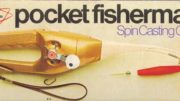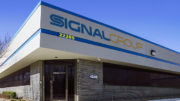The folks at the ATSC are out at the CES show promoting the next generation of television broadcasting, and I hope to have a photo essay showing them in the next day. But for now there’s some news coming from their livestreamed event that cord-cutters will want to know.
“Significant Momentum”
In a press release saying “NextGen TV reaffirms the future of broadcast television is here highlighting significant industry momentum at CES,” we’ve learned about two positive announcements. But I’ll get to that in a minute. First I have to give a shoutout to whomever wrote that headline. That’s one for the ages, I’ll tell ya. But back to the point.
In addition to highlighting that ATSC 3.0 is a perfect fit for those big TV screens in most new cars today, we’re finally starting to see some reasonably priced options for receiving ATSC 3.0 signals. Hisense, which is mostly known for lower-priced TVs found at Walmart, has announced ATSC 3.0-compatible models expected to debut later this year. With an expected price point of $799.99, this will be the lowest-priced ATSC 3.0 TV yet, and it’s sure to drive adoption of the technology in newer TVs at lower price points.
The press release also vaguely hints at a solution from MediaTek which should make adoption of ATSC 3.0 easier through pre-built chips. The hope is that this will make it easier for manufacturers to deliver solutions. They mention a product called the “Mediatek 9100 ATSC3.0 Demodulator” which appears on the ATSC’s web site but still isn’t on MediaTek’s web site. It appears to be a chip, not a retail product, but hopefully will drive retail products like converter boxes in the future.
There’s a bit more to the press release, which you can read here. I personally am not sure it rises to the level of “significant momentum” but that’s up to you, dear reader, to decide.
Pearl TV?
Perhaps the most interesting thing here is that the news doesn’t come from the ATSC itself. It comes from an organization calling itself Pearl TV. According to their web site, they’re an industry organization made up of the largest station owners. Despite sounding something like the Pentavirate, this is most likely a benign group made up of competitors with common interests. The largest TV station owners (who together, according to them, own 800 TV stations) want the next generation of TV broadcasting so they can serve targeted ads to customers. That’s the real motivation here.
My opinion
Some news is better than no news. And I will completely admit that there’s been some growth in ATSC 3.0 in the last 12 months. Growth took a year off because of, well, you know. But now it looks like about half the country is served by at least one ATSC 3.0 station. That’s great and all, but of course there isn’t an inexpensive, widely available converter box.
And of course there’s no 4K content, which is what most people associate with the next generation of broadcasting. We’ll have to see some changes there before the general public gets interested in ATSC 3.0.
Friends, I haven’t been the most enthusiastic supporter of this tech for several reasons. I think it’s very late to the party, and it’s not going to really benefit broadcasters in the way they think. I think that it’s still going to take a good four years before it really becomes commonplace, and by then it’s hard to know whether there will be consumer demand. But, let’s take today’s news as positive, and let’s hope there’s even more good news to come!





